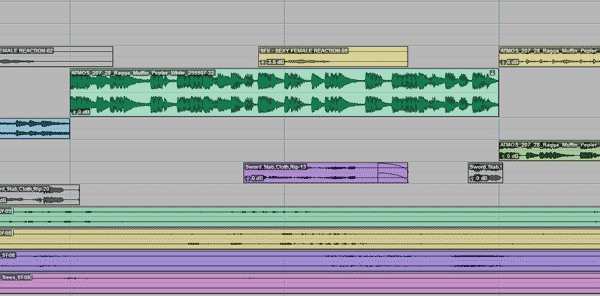YouTube “Star Wars” and take a look at what people have done with a movie from 1979. This movie franchise has been overdubbed, remixed, remastered and remade more times than a human can count. Yet each time someone slices and dices it, it takes on a whole new meaning. What possesses someone to sit at a computer to rehash a movie they’ve probably seen 36 times? It’s simple. These movies hold a special place in our hearts and they want to put their own spin on it. Movies inspire movie makers. Music inspires musicians. Good ideas inspire good ideas. It’s inspiring to know.
I find it amazing that an editor of any kind can alter the flow of the story. The editor can control the information the audience gets. It’s incredibly important in this day and age to waste as little of peoples’ time as possible. If you are gonna waste peoples’ time, you better be entertaining them or giving them useful information in the process. There is great power in editing if used properly.
Here are some simple tips on where you should be editing.
1: The Script
If a sentence makes sense without a word in it… delete it! It’s hard enough cramming 35 seconds into 30 all day every day, so save yourself some trouble later and chop unnecessary words before the talent even shows up to voice it. Here’s one of my most hated editing nuisances:
UNEDITED: Big Johns Raspberry stand is located at 1991 Dangle Ave.
EDITED: Big Johns Raspberry Stand. 1991 Dangle Ave.
I just chopped three words out of that mess! Three words have got to be worth one second! No time compression. No telling your announcer “FASTER FASTER FASTER!!!!” Cut the crap and keep the essentials.

2: The Music
I mean you can pull down the 30 second version of the song from your music library because you are in a rush. I pull down every version because I’m a digital hoarder. One day they will make a reality show about the 900 gigs of audio I have stored “just in case I need it”. My argument is that it’s ok to hoard digital files. Media storage is dirt cheap. I digress.
Some instruments like horns and strings can show up in your music, and that will compete with your voiceover, especially female vocals whose frequency range is primarily all high end. Maybe there’s a version of the track you like that’s underscore only. Just get everything!
So you’ve got the music. Now get ready to cut out all the boring or annoying parts. Remember, you’re stuck editing library tracks, and good ones are always hard to find. It’s your job as the producer to make sure you use not only the best score you can find, but more importantly only the best parts of the score. Ideally you want to take the best 30 seconds of a 3 minute song and use that as your track.
I edit music primarily in Grid Mode in Pro Tools. I click the tempo in the Transport window and tap the “T” key along with the music to determine the beats per minute. Once the BPM is set I start editing in grid mode (Bars and Beats) and just remove the bars of music I don’t like or simply won’t work.
It’s a little more work to edit this way in the beginning, but in the long run it makes cutting the music faster when you can remove bars at a time and everything left over remains in perfect time. You can also sync your delays to match the tempo of your music. The grid can also be a visual tool so you know exactly where your downbeat hits, and you can drop voice tracks into bars like donut holes!

3: The Voice:
I always get my music and FX in a session before I have the voice tracks. I find it easier for the talent to understand what I am trying to create when the work is half done before they show up. The music and FX should paint a picture in the talent’s mind before they even open their mouth. The more work you do before anyone knocks on your studio door will pay off. It’ll make the process easier all around. Plus you can finish the project 10 minutes after the talent leaves and feel like a hero.
Remember that editing doesn’t mean cutting everything out. It means using everything you can to effectively tell a story. I use flubs, stutters, breaths and gasps to create the illusion of a realistic read. Radio has become incredibly sterile. Leaving the odd “mistake” in can actually trick your listener into thinking what they are hearing is “live”. They don’t know the difference. So use that to your advantage when you can.
I’ve attached a promo I did recently for INDIE88. It’s long. But you can hear me about half way through struggling to grasp what the secondary voice is even talking about. It’s a collection of 3 different outtakes, but I believe people will identify with the real factor of the read.
Experiment! Remember that every other producer in your cluster is pulling from the same library. It’s how you put it together that will separate your work from everyone else’s. Editing is the next most powerful tool (next to the script) in telling a story. But that’s just my opinion.

